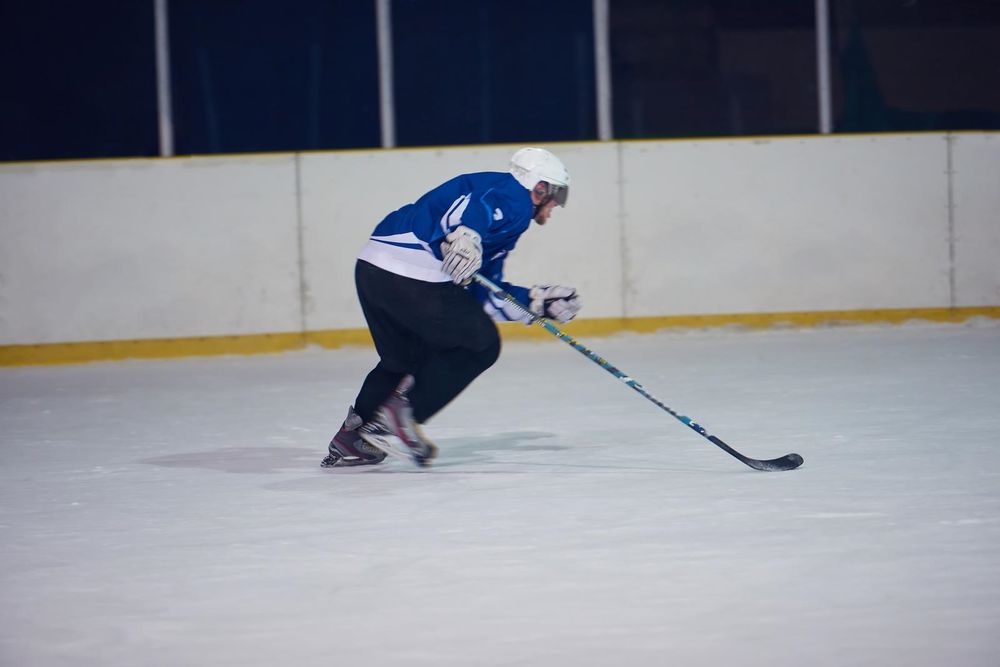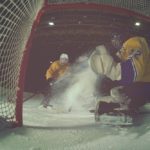In the fast-paced game of hockey, face-offs hold the key to gaining an edge over the opposition. The ability to consistently win face-offs not only grants control of the puck but also dictates the tempo of play.
However, it takes more than sheer strength and agility to crack the code to winning face-offs. It requires a strategic mindset, meticulous hand-eye coordination, and an understanding of the ice’s different zones.
By establishing a power position and employing effective strategies, players can greatly enhance their chances of achieving face-off success.
In this article, we will delve into the art of winning face-offs, offering valuable tips and insights to help players improve their performance in this critical aspect of the game.
The Importance of Face-Offs
Face-offs play a crucial role in the flow and outcome of a hockey game. They are not just a simple puck drop; they are strategic battles that can determine possession and ultimately, the success of a team.
Strategies for gaining an advantage in face-offs are essential for any player or team looking to gain an edge in the game. Winning a face-off in the defensive zone can prevent the opposition from creating scoring chances, while winning one in the offensive zone increases the likelihood of generating scoring opportunities.
Additionally, face-offs become even more significant during power plays, as they can determine the flow of play. Understanding and implementing effective face-off strategies can greatly influence the outcome of a hockey game.
Face-Off Locations and Rules
There are nine specific spots on the ice known as face-off dots where face-offs occur in a hockey game. These face-off locations follow specific rules and regulations to ensure fair play and maintain the integrity of the game.
Here are some important details about face-off positioning and strategies:
- Face-off positioning:
- Centremen must position themselves on the designated dot before the puck is dropped.
- They must have their skates entirely behind the dot lines.
- The opposing players must be at least five feet away from the dot until the puck is dropped.
- Face-off strategies:
- Centremen can use different techniques, such as tying up the opponent’s stick or attempting to win the draw cleanly.
- They can also communicate with their teammates to execute specific plays or gain a numerical advantage.
Understanding the face-off locations and rules allows players to strategize effectively and gain an edge in winning these crucial battles for puck possession.
Strategies for Winning Face-Offs
To gain an advantage in winning face-offs, players can employ various strategic approaches that exploit their opponents’ weaknesses. Developing a solid face-off strategy is crucial for achieving success in this aspect of the game.
One effective technique is to anticipate the opponent’s movements and adjust your approach accordingly. By studying their tendencies, players can react quickly to the puck drop and make swift movements to gain control.
Hand-eye coordination is also vital, as timing the stick with the puck drop can provide an advantage. Additionally, utilizing physical strength to attack the opposing centerman’s stick and gain control of the puck can be a successful strategy.
Adapting to the situation and opponent is key, as different techniques may be required for different scenarios. By employing these face-off strategies, players can increase their chances of winning and gaining possession of the puck.
Key Skills for Face-Off Success
Developing key skills is essential for achieving success in face-offs. To excel in this area, players must focus on mastering hand-eye coordination and understanding their opponent’s strategies. These skills are crucial for gaining an advantage and increasing the chances of winning face-offs. Here are three key skills that can contribute to face-off success:
- Mastering Hand Eye Coordination: Timing your stick with the puck drop is vital for gaining control of the puck. This skill requires precision and quick reflexes, allowing you to react swiftly and gain an advantage over your opponent.
- Understanding Opponent’s Strategies: Anticipating your opponent’s moves can give you an edge in face-offs. By studying their tendencies and reading their body language, you can adjust your approach accordingly and increase your chances of winning the puck.
- Adaptability: Being able to adapt your strategy based on the situation and opponent is crucial for face-off success. By staying flexible and adjusting your techniques, you can stay one step ahead and increase your chances of winning the face-off.
Advanced Tips for Winning Face-Offs
Building on the key skills for face-off success, players can further enhance their performance by incorporating advanced techniques and strategies into their game. To excel in face-offs, players should understand the importance of mind games, as well as utilize specialized equipment and techniques.
| Advanced Tips for Winning Face-Offs |
|---|
| 1. Face-off Mind Games |
| – Study your opponent’s tendencies and adapt your strategy accordingly. |
| – Use feints and deceptive movements to throw off your opponent. |
| – Establish dominance through body language and confidence. |
| 2. Face-off Equipment and Techniques |
| – Utilize a specialized face-off stick with a modified blade for better control. |
| – Master different hand positions, such as the backhand grip or the “palm-up” grip. |
| – Practice using your body to gain leverage and create separation from your opponent. |
| – Experiment with different techniques, such as tying up your opponent’s stick or using your skate to kick the puck to a teammate. |
Frequently Asked Questions
Are There Any Penalties Associated With Face-Offs?
There are penalties associated with face-offs, known as face-off violations. These infractions can include encroachment, player positioning, stick positioning, and timing. Violations can result in minor penalties or face-off disqualification.
What Is the Role of the Wingers During a Face-Off?
The role of wingers during a face-off is crucial. They provide support to the centerman by positioning themselves strategically to gain possession of the puck or disrupt the opposing team’s wingers. Their importance lies in creating scoring opportunities and maintaining defensive stability.
How Does the Size and Skill Level of the Opposing Centerman Affect Face-Off Strategy?
The size and skill level of the opposing centerman can significantly impact face-off strategy. Analyzing their size allows for adjustments in positioning and leverage, while assessing their skill level helps determine the best technique to use in order to gain an advantage.
Are There Any Specific Techniques to Improve Hand-Eye Coordination for Face-Offs?
Improving hand-eye coordination for face-offs is crucial. Incorporate exercises such as ball tracking, hand-eye coordination drills, and reaction time training to enhance your skills. Reacting quickly to the puck drop is vital for gaining an advantage in face-offs.
How Does the Positioning of the Defensemen Impact Face-Off Strategy?
The positioning of defensemen has a significant impact on face-off strategy. They can provide support to the centerman by covering open passing lanes or disrupting the opposing centerman’s path, thereby increasing the chances of winning the face-off.
Conclusion
In conclusion, winning face-offs in hockey requires a combination of skill, strategy, and coordination. Understanding the importance of face-offs and their impact on the game is crucial for players to develop effective techniques.
By mastering the key skills and implementing strategic approaches, players can gain an advantage in puck possession and create scoring opportunities.
Just as cracking a code requires precision and perseverance, mastering face-offs requires dedication and a commitment to improve.









